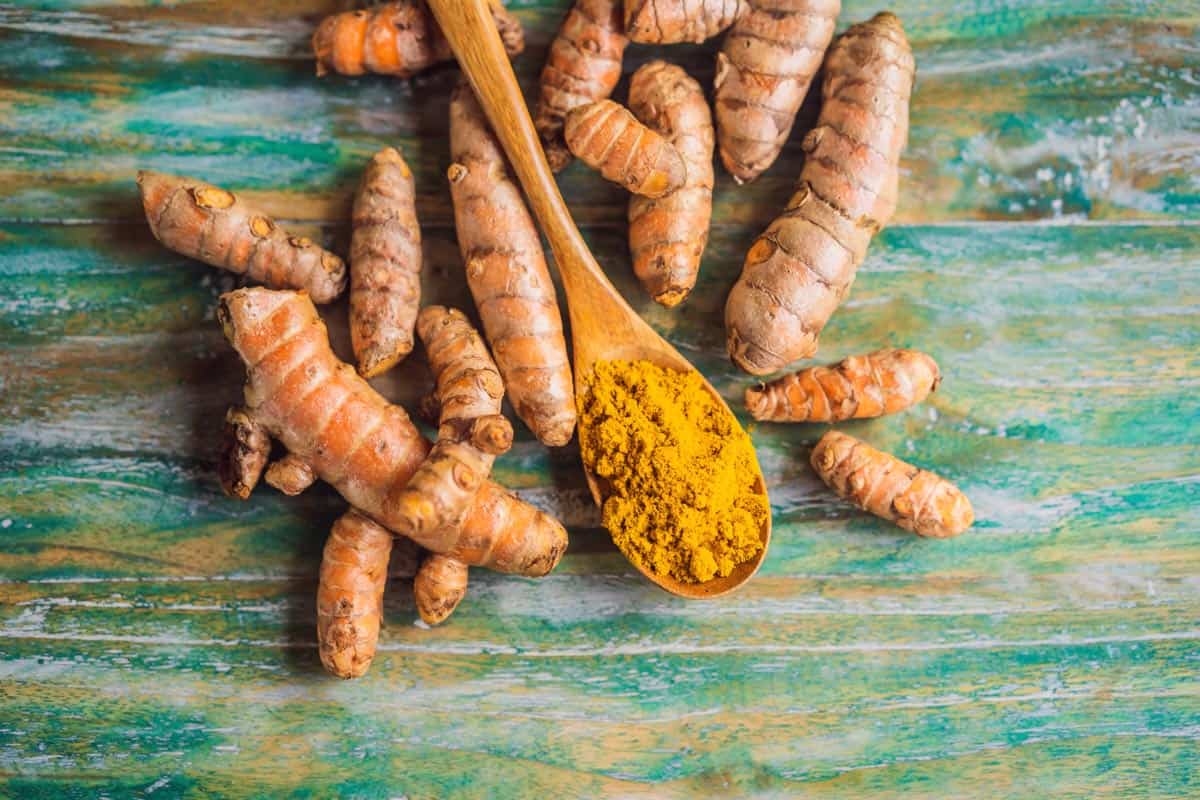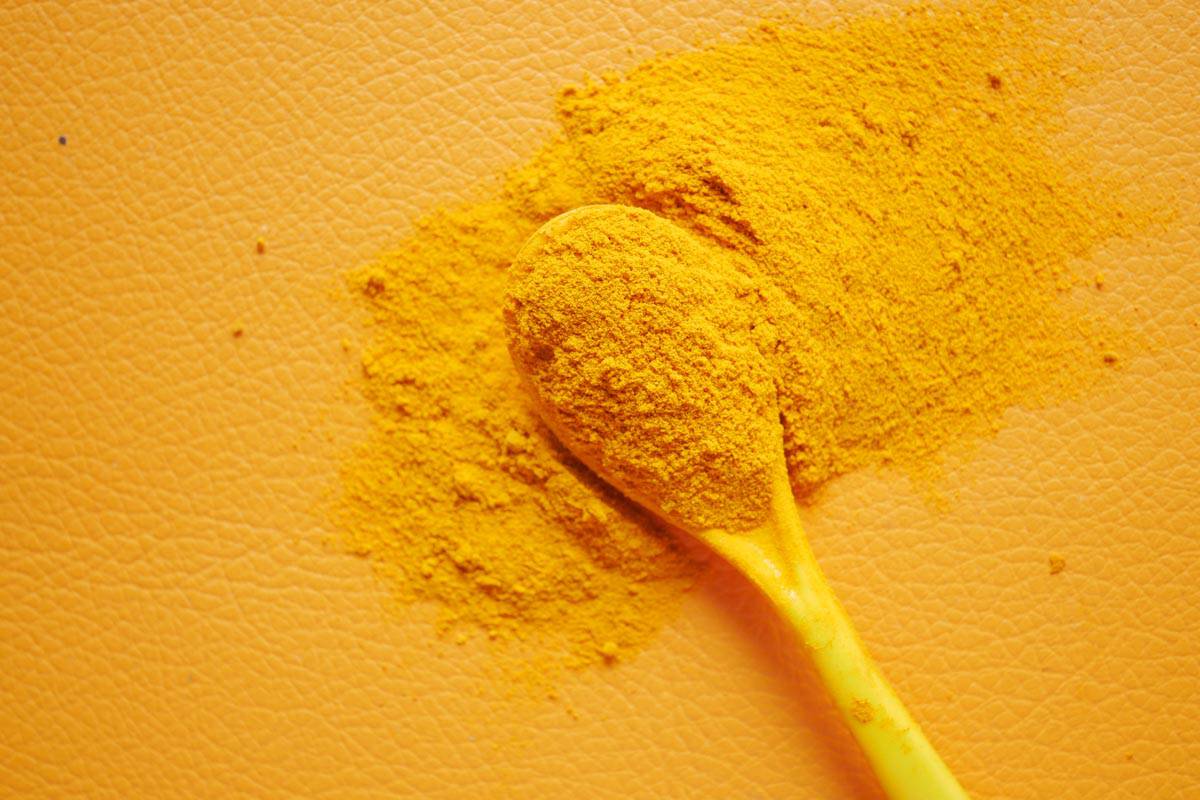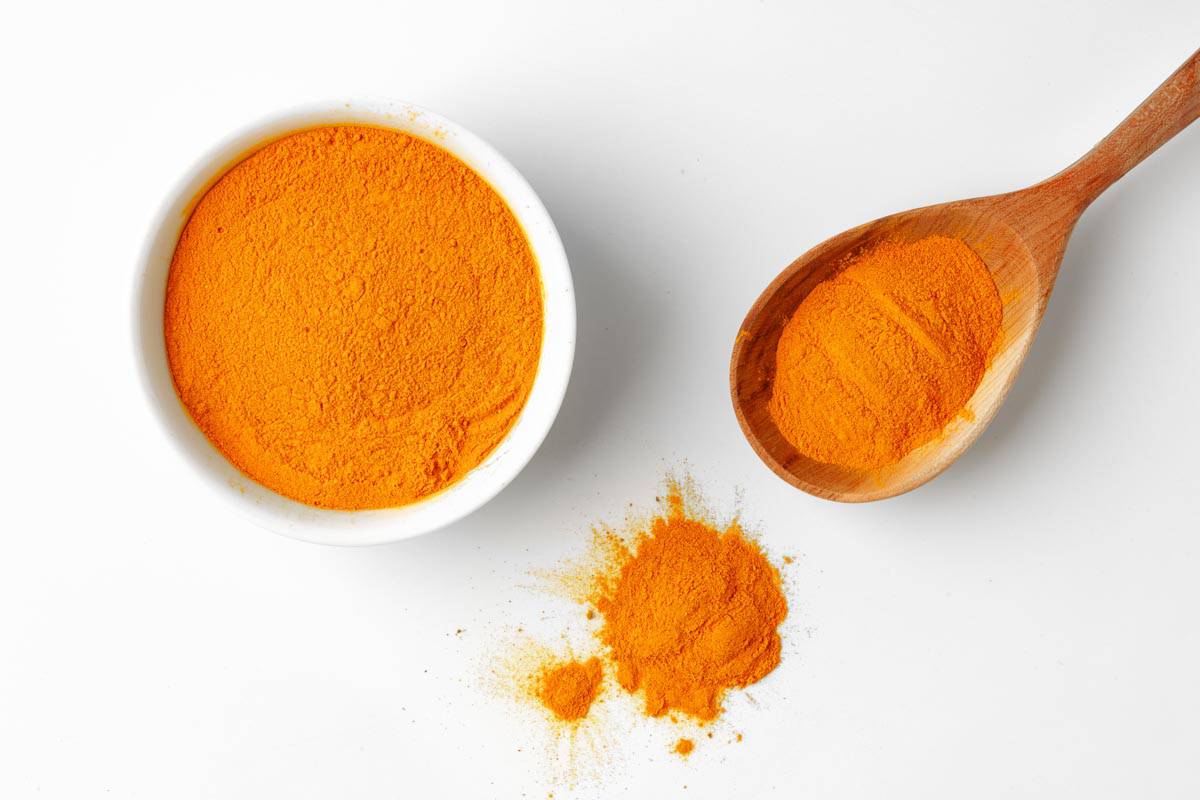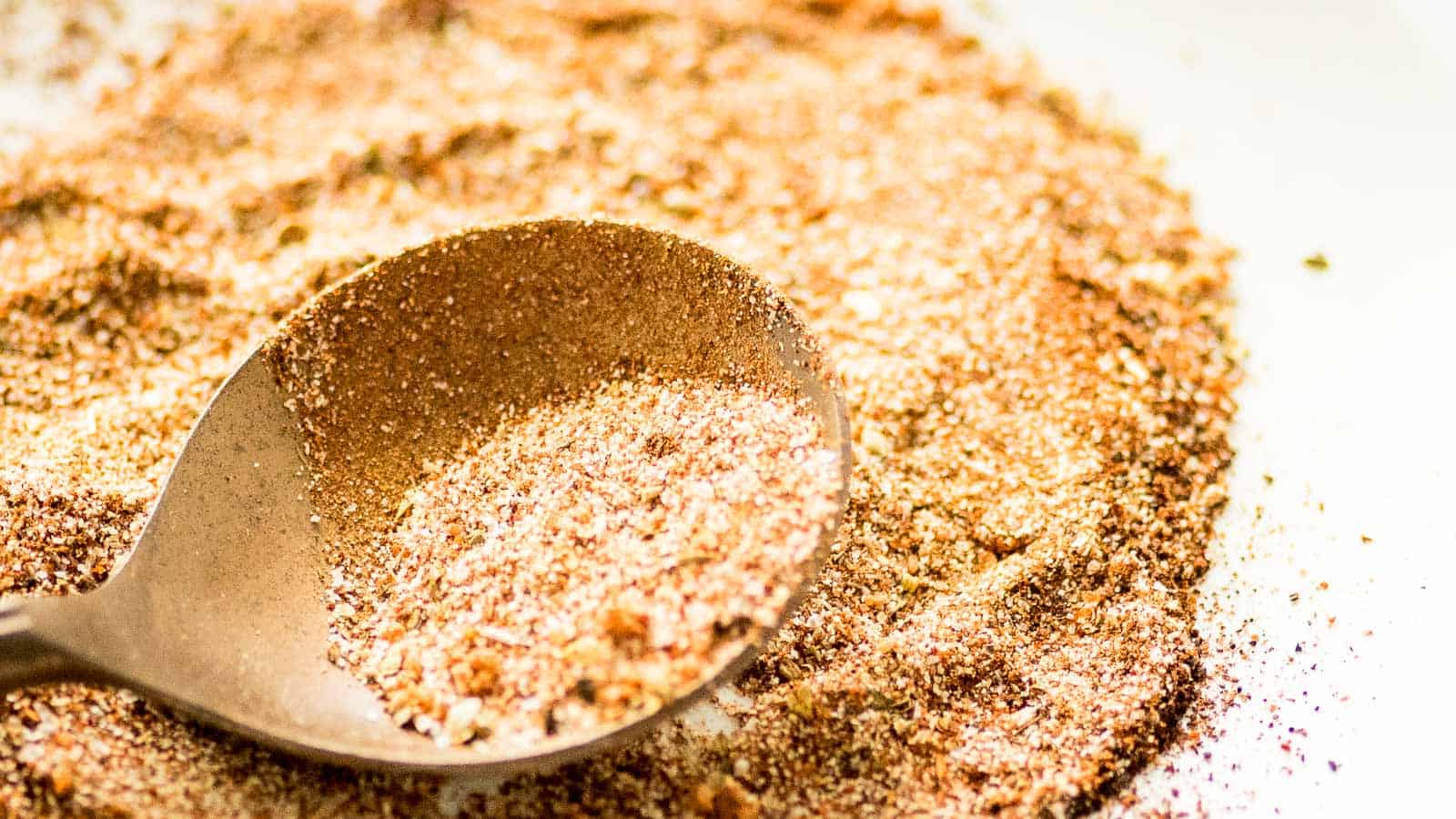Turmeric is the ground powder of the Curcuma longa plant, a member of the ginger family. Fresh turmeric is the root of this same plant. It has a more potent flavor and color compared to ground turmeric.
Turmeric is used in a variety of dishes, like curries, soups and spice blends. It’s also used as a coloring agent in food products like mustard and cheese. Most commonly used in South Asian and Middle Eastern cuisines, turmeric has a unique bright yellow color and an earthy, peppery taste.

Selecting turmeric
To grow your own turmeric, purchase rhizomes, or roots, from a local grocery store or market. Slice it into sections. Then, fill a pot with about 3 inches of soil and lay the sections flat, layering more soil on top. Water them and place the pots into clear plastic bags. Place the pots in a warm area, between 86 to 95 F, or use a heat mat to ensure this temperature.
Once the plants are too large for their plastic bags, remove the covers and water the plants every few days. You want the soil moist but not saturated.
When your sprouts are about 6 inches tall, transplant them to larger pots. You will want to fill the pot with potting soil and keep the turmeric either inside on a heat mat that you lower to 70 F over multiple days or outside in partial shade for the first few days, then into the sun.
To harvest the turmeric, start monitoring the plants at around seven months. Once the leaves and stem appear dry, it is ready to harvest. Cut the stem off of the root, wash the root well, dry and store it in the fridge for up to six months.
To make turmeric powder, boil the roots, then dry them in the sun or in a food dehydrator until they are fully brittle. Grind them in a coffee grinder or spice mill to create a fine powder. Be sure to use gloves to avoid staining your hands.

If you don’t have room for a garden, you can buy fresh turmeric rhizomes from the grocery store and ground turmeric from a market or spice shop. When buying spices, be sure they are stored in an airtight container. Turmeric should be finely ground and bright yellow in color.
If you are buying your turmeric from a spice shop, they may allow you to smell it before you buy it. It should have an earthy aroma with warm, slightly bitter undertones. You may also note hints of citrus and ginger.
Avoid packages with discolored powder. Packages should also be free of excess moisture or any signs of mold.
The taste of turmeric
Turmeric has an earthy, warm, peppery taste, which can translate to a spicy note. It is slightly bitter, and some people detect notes of ginger and citrus.
“Tumeric has a unique, slightly spicy flavor to it. Though I do use it in my cooking throughout winter, I use it a lot in smoothies in the warmer weather. It pairs really well with fruits like peaches and mangoes that override the spicy taste, and bring a new flavor. A little bit goes a long way, so if you’re just starting out with turmeric, stick to smaller amounts!”
— Shelby, Fit As A Mama Bear

Storage suggestions
Similar to herbs like parsley or basil, fresh turmeric root should be washed under cool running water and dried before storing. Ground turmeric requires no cleaning. Simply keep it in an airtight container in a cool, dry spot like your pantry to preserve its flavor, texture and color. It will retain its taste for several months.
If you have bought turmeric at a spice shop or grocery store, continue to store it in the original container. If stored properly, it can last up to 3 years. If you notice the turmeric has started to lose its characteristic taste and smell, replace it with a new jar.
Culinary uses for turmeric
Turmeric is used to add flavor and color to various dishes. Ground turmeric can be incorporated into curries, soups, stews, condiments and marinades.
It’s also often used in spice blends, like garam masala, ras el hanout, berbere, tandoori masala and sometimes baharat. It is employed as a coloring agent in some pickles and mustards.

Turmeric is a wonderful addition to vegetable, egg and rice dishes. It is found in baked goods, like bread and muffins, and beverages such as golden milk lattes.
Turmeric is used in many cuisines, though it is most prominently used in Middle Eastern and South Asian cuisine. You will also find turmeric in Ethiopian, Indian, Thai, Indonesian, Malaysian, Caribbean, Moroccan, Vietnamese and Sri Lankan dishes.
Final thoughts
Turmeric is a bright yellow powder made from the dried ground root of the Curcuma longa plant. You can also harvest fresh turmeric rhizomes, or roots, and use them for culinary purposes. Tumeric has a distinctive earthy, peppery, slightly bitter flavor that is sometimes described as spicy. It has subtle notes of ginger and citrus.
It is available year-round at grocery stores, spice shops and markets. Ensure the containers are airtight and contain no signs of mold or moisture. The spice should be a bright yellow color, aromatic and finely ground.
Store ground turmeric in an airtight container in a cool, dry place. There is no need to freeze it.
Try turmeric in spice blends, curries, sauces, soups, salad dressing, marinades, condiments, and in rice, vegetable and egg dishes. It adds warm, earthy flavor and color to baked goods and beverages, too.
Be sure to pick up some turmeric the next time you are at the market. Experiment with adding this colorful, flavorful ingredient to your cooking, and you may just discover your new favorite spice.
Gen La Rocca is a professional chef, writer and editor living in Southern California. She is the owner and recipe creator behind Two Cloves Kitchen, a food site featuring contemporary, California-inspired recipes. She has edited over 20 novels, short stories and essays for publication.